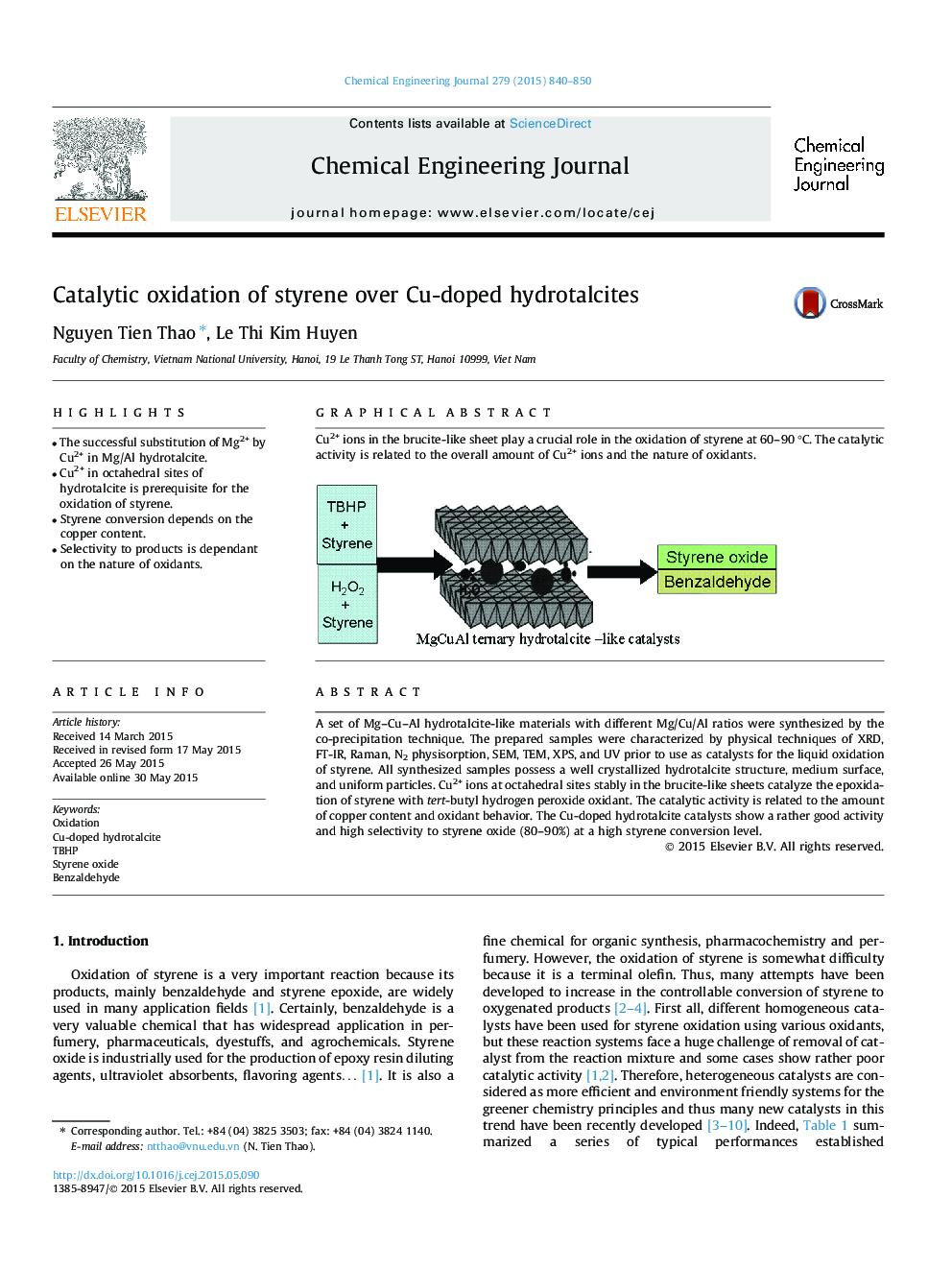| کد مقاله | کد نشریه | سال انتشار | مقاله انگلیسی | نسخه تمام متن |
|---|---|---|---|---|
| 146135 | 456362 | 2015 | 11 صفحه PDF | دانلود رایگان |

• The successful substitution of Mg2+ by Cu2+ in Mg/Al hydrotalcite.
• Cu2+ in octahedral sites of hydrotalcite is prerequisite for the oxidation of styrene.
• Styrene conversion depends on the copper content.
• Selectivity to products is dependant on the nature of oxidants.
A set of Mg–Cu–Al hydrotalcite-like materials with different Mg/Cu/Al ratios were synthesized by the co-precipitation technique. The prepared samples were characterized by physical techniques of XRD, FT-IR, Raman, N2 physisorption, SEM, TEM, XPS, and UV prior to use as catalysts for the liquid oxidation of styrene. All synthesized samples possess a well crystallized hydrotalcite structure, medium surface, and uniform particles. Cu2+ ions at octahedral sites stably in the brucite-like sheets catalyze the epoxidation of styrene with tert-butyl hydrogen peroxide oxidant. The catalytic activity is related to the amount of copper content and oxidant behavior. The Cu-doped hydrotalcite catalysts show a rather good activity and high selectivity to styrene oxide (80–90%) at a high styrene conversion level.
Cu2+ ions in the brucite-like sheet play a crucial role in the oxidation of styrene at 60–90 °C. The catalytic activity is related to the overall amount of Cu2+ ions and the nature of oxidants.Figure optionsDownload as PowerPoint slide
Journal: Chemical Engineering Journal - Volume 279, 1 November 2015, Pages 840–850